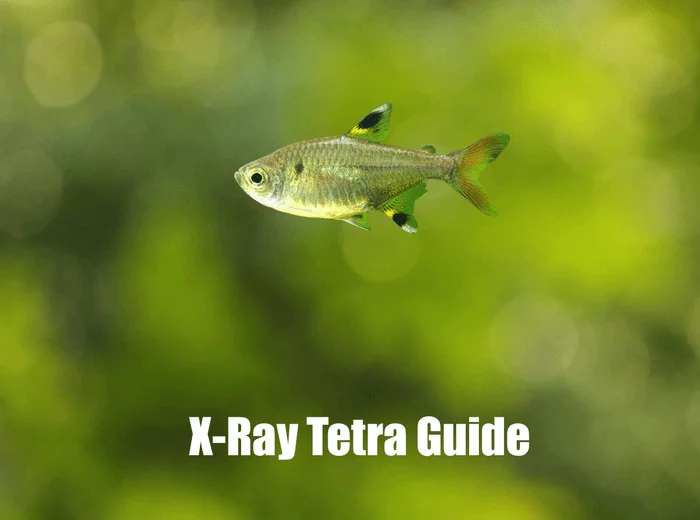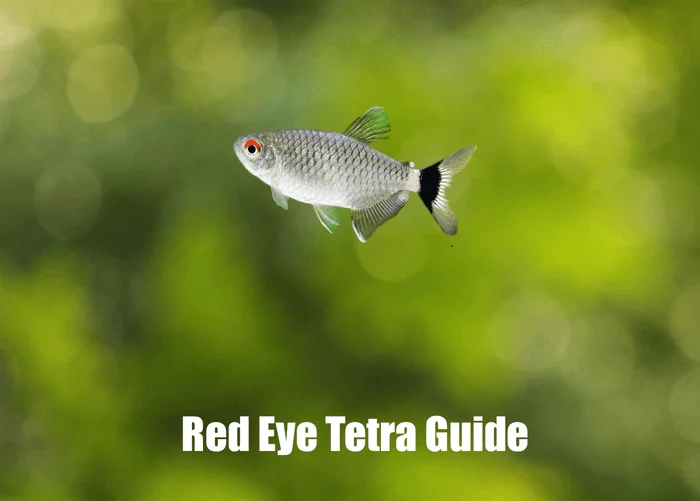Complete Care Guide for Diamond Tetra: Creating a Dazzling Aquarium

Introduction
Considering Diamond Tetra for your aquarium or looking to enhance their care? This detailed guide is tailored for aquarists of all levels. Diamond Tetra, known scientifically as Moenkhausia pittieri and prized for their shimmering colors and elegant finnage, are a stunning addition to freshwater tanks. This guide will cover everything you need to know to ensure your Diamond Tetra flourish.
Understanding Diamond Tetra
Origin and Characteristics
The Diamond Tetra, originating from the serene waters of Venezuela, particularly in the Lake Valencia basin, is a dazzling species in the aquarium hobby. These small-sized fish, typically reaching about 2 to 2.5 inches in length, are renowned for their shimmering, diamond-like scales that reflect light beautifully, making them a standout in any aquarium setting. Their most distinctive feature is the iridescent silver body, accented with delicate gold and orange hues along their fins, adding to their visual allure.
The males of the species become particularly impressive during the breeding season, exhibiting brighter colors and more pronounced finnage, with their dorsal and anal fins becoming more elongated and vibrant. Diamond Tetras are cherished for their peaceful demeanor and their adaptability to a range of tank conditions, making them a favored choice among aquarists. As active swimmers, they enjoy shoaling in the middle layers of the water, engaging in playful interactions with each other, which adds a dynamic and elegant element to the tank.
Behavior and Tank Mates
Diamond Tetra are peaceful, schooling fish and should be kept in groups of at least six. They are ideal for community tanks with other peaceful, similarly sized fish. Their graceful swimming and non-aggressive nature make them a favored choice among aquarists. Some common and suitable tank mates for Diamond Tetra:
- Other Peaceful Tetras: Such as Neon or Rummy Nose Tetra.
- Dwarf Cichlids: Like Apistogrammas, which are also peaceful.
- Peaceful Barbs: Like Cherry Barbs.
- Dwarf Corydora: Peaceful bottom dwellers.
- Small Rasboras: Harmonize well in a community tank.
- It’s important to choose tank mates that are peaceful and won’t outcompete the Diamond Tetra for food.
Remember, while choosing tank mates, consider factors like water parameters, size, temperament, and dietary needs to ensure a harmonious aquarium. Also, always introduce new fish gradually and monitor their interactions to ensure a peaceful environment. 🐠
Setting Up the Perfect Tank
Tank Size and Conditions
A 30-gallon tank or larger is recommended for a school of Diamond Tetra but they will benefit from some more swimming room. These Tetra thrive in specific water conditions that mimic their natural habitat. Additionally, maintaining ideal water parameters is the key to ensuring their health and well-being in a home aquarium. Here’s a breakdown of their ideal water conditions:

- Temperature: 75°F to 82°F (22°C to 28°C). This tropical temperature range helps in promoting their natural behavior and vibrant coloration.
- pH Level: 6.0 and 7.5, slightly acidic to neutral water conditions.
- Water Hardness: 5-15 dGH, indicating they prefer soft to moderately hard water
- Water Quality: Like most fish, Diamond Tetra require clean and well-oxygenated water. Regular water changes (about 25% per week) are recommended to maintain good water quality. It’s crucial to remove any chlorine or chloramine from tap water before adding it to the tank.
- Nitrate Levels: Keeping nitrate levels low is important, as high levels can be harmful. Aim to keep nitrates below 20 ppm.
- Ammonia and Nitrite Levels: Both ammonia and nitrite should always be at 0 ppm. Even small amounts of these can be toxic to fish.
It’s important to use a reliable aquarium test kit to regularly monitor these water parameters. Sudden changes in water conditions can stress or harm your fish, so any adjustments should be made gradually. Maintaining stable water conditions is key to the health and longevity of your Diamond Tetra. 🌊
Lighting and Decor
- Moderate Lighting: Mimic their natural, slightly shaded habitat with moderate lighting.
- Day/Night Cycle: Maintain a regular cycle, typically around 10-12 hours of light per day.
- Plants: Dense vegetation, including tall and floating plants, to provide hiding spaces and a natural environment.
- Substrate: A dark-colored substrate can enhance the natural colors of the fish.
- Hiding Places: Include driftwood, rocks, and caves for shelter.
- Open Swimming Space: Ensure ample free-swimming space to accommodate their active swimming behavior.
Diet and Nutrition
Feeding Habits
Diamond Tetra are omnivorous. Therefore, a balanced diet including high-quality flake foods, frozen or live brine shrimp, daphnia, and occasional vegetable supplements will keep them healthy.
Feeding Schedule
Feed them small amounts once or twice a day, being careful not to overfeed.
Health and Wellness
Breeding Tips
Breeding Diamond Tetra can be a rewarding experience, but it requires a bit of preparation and understanding of their breeding behavior. Here are some tips to help you successfully breed Diamond Tetra:
- Breeding Tank: Set up a separate tank with soft, slightly acidic water (pH around 6.0-7.0) and a temperature of about 80°F (25°C). Dim lighting and fine-leaved plants or spawning mops are recommended.
- Identifying and Introducing Breeding Pairs: Choose healthy, mature fish (around 6-12 months old). The males are typically brighter and have slightly longer fins. Introduce them into the breeding tank, ideally one male to every two females.
- Condition the Breeders: Feed them high-quality live or frozen foods to encourage spawning.
- Spawning Process: Introduce a well-conditioned pair or small group. Spawning usually occurs in the morning.
- Post-Spawning Care: Remove the adults post-spawning to prevent egg predation. The eggs typically hatch in about 24-36hrs.
- Rearing Fry: Start with infusoria or liquid fry food, then graduate to baby brine shrimp as they grow.
Breeding Diamond Tetras requires a dedicated approach, focusing on creating the right environment and providing appropriate care before, during, and after spawning. With patience and attention to detail, you can successfully breed and raise Diamond Tetra fry.
Common Health Concerns
Diamond Tetra, renowned for their shimmering appearance, are not exempt from common health challenges that affect many tetra species, such as ich (white spot disease) and fungal infections. These health issues can be particularly concerning for Diamond Tetras, given their distinctive iridescent scales and active swimming behavior. To ensure their well-being, maintaining optimal tank conditions is crucial. This includes regular water changes, stable water parameters (pH, temperature, and hardness), and a well-balanced diet to strengthen their immune system. Diamond Tetras thrive in slightly acidic to neutral water, reflecting their native habitat in Venezuela’s Lake Valencia region. Vigilant monitoring of the tank for signs of stress or illness is critical, and prompt measures should be taken at the first signs of health problems. Early intervention is key to managing these common issues effectively. By sustaining a clean, stable environment and catering to the specific needs of Diamond Tetra, you can enjoy the full beauty and vivacity of these sparkling fish in your aquarium. Discover more about proficient tank management to ensure your Diamond Tetras remain healthy and vibrant.
Life Expectancy
With proper care, these tetras can live up to 4-5 years. Regular monitoring and maintenance of the tank environment are key to their longevity
Diamond Tetra Wrap Up
In conclusion, Diamond Tetra add a touch of iridescent beauty and graceful movement to any freshwater aquarium. By adhering to the recommendations in this comprehensive care guide, you can create a thriving environment that perfectly meets the unique needs of your Diamond Tetras. These fish, with their shimmering scales and elegant schooling behavior, not only enhance the aesthetic appeal of your tank but also contribute to a lively and dynamic aquatic ecosystem. The key to a flourishing and healthy aquarium is maintaining a stable and caring environment. By providing your Diamond Tetras with the appropriate water conditions, a nutritious diet, and consistent care, you’ll ensure that these sparkling fish continue to thrive and bring a captivating presence to your aquarium with their dazzling appearance and spirited nature.
Frequently Asked Questions
Diamond Tetras can grow up to about 2.5 inches (6.4 cm) in length.
It’s recommended to keep Diamond Tetras in groups of at least 6 to promote social behavior and reduce stress.
Diamond Tetras are generally not aggressive and are suitable for community tanks with other peaceful fish.
Share Your Tetra Experiences
Do you have any stories or tips about your Tetra tank? Share them in the comments below!
Help Others Discover This Guide
Navigate the Tetra in your tank with confidence. This guide is your pathway to creating a vibrant and healthy aquatic showcase. Enjoy the dazzling colors and lively nature of these unique fish!





